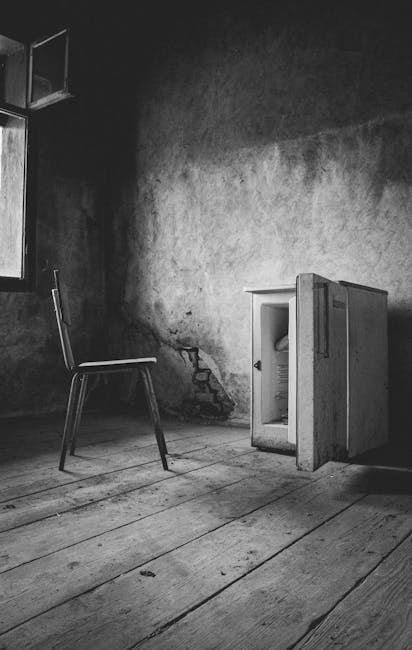Ghostly Encounters: How to Tell If Your House Is Haunted
Have you ever experienced the eerie feeling of being watched in your own home? Or perhaps you’ve heard unexplained noises in the dead of night? While these sensations can often be dismissed as tricks of the mind, they could also be indicators of a haunted house. In this comprehensive guide, we will delve into the signs of paranormal activity, share real-life examples, and provide actionable tips on how to deal with ghostly encounters. Whether you’re a skeptic or a believer, understanding the telltale signs of a haunted house can be both intriguing and useful.
Understanding the Paranormal
The concept of haunted houses dates back centuries, with tales of ghostly apparitions and mysterious happenings pervading cultures worldwide. According to a Pew Research Center survey, approximately 18% of Americans claim to have seen a ghost. But what exactly defines a haunting?
Types of Hauntings
Hauntings can generally be categorized into three types: residual hauntings, intelligent hauntings, and poltergeist activity.
Residual Hauntings: These involve repetitive phenomena, like hearing footsteps or seeing shadowy figures that follow the same pattern. It’s believed that these hauntings are like “recordings” of past events.
Intelligent Hauntings: In these cases, the spirit appears to be aware of the living and may attempt to communicate, often through moving objects or making noise.
Poltergeist Activity: Poltergeists are often associated with violent or disruptive phenomena, such as objects being thrown or loud noises without a discernible source.
Signs Your House Might Be Haunted
Now that we’ve established the types of hauntings, let’s explore the common signs that suggest your house may be home to more than just the living.
Unexplained Noises
One of the most reported signs of a haunted house is unexplained noises. These can range from footsteps and knocking sounds to voices or music. It’s important to rule out logical explanations, such as plumbing issues or settling noises, before jumping to conclusions.
Temperature Changes
Sudden and dramatic changes in temperature, particularly cold spots, are often reported in conjunction with paranormal activity. While drafts and faulty HVAC systems can account for some of these occurrences, persistent cold spots in specific areas of the home might suggest a ghostly presence.
Visual Phenomena
Seeing is believing, as they say. Apparitions, shadows, orbs in photographs, and flickering lights can all be signs of a haunting. In a Ghost Research Society study, 40% of paranormal investigators reported witnessing visual phenomena during investigations.
Object Movement
Objects moving on their own, disappearing, or being found in odd places can be unsettling. Before attributing this to ghosts, ensure that there isn’t a logical explanation, such as drafts or mischievous pets.
Strange Odors
Unexplained smells, such as perfume or cigar smoke, can be indicative of a haunting, especially if they don’t have a discernible source. These scents are often linked to specific spirits or past residents.
Real-Life Examples of Haunted Houses
Throughout history, numerous homes have gained notoriety for their alleged hauntings. Here are a few famous examples:
The Amityville House
Perhaps one of the most infamous haunted houses in the United States, the Amityville House in New York has been the subject of books and movies. Reports include strange odors, cold spots, and ghostly apparitions.
The Winchester Mystery House
Located in San Jose, California, the Winchester Mystery House is known for its architectural oddities and reports of paranormal activity. Visitors and staff have reported hearing voices and footsteps in empty rooms.
The Myrtles Plantation
This historic plantation in Louisiana is rumored to be haunted by several spirits, including that of a former slave named Chloe. Guests have reported seeing apparitions and experiencing unexplained phenomena.
What to Do If You Think Your House Is Haunted
If you’ve experienced some of the signs mentioned above and suspect your house may be haunted, here are some steps you can take:
Keep a Journal
Documenting your experiences can help identify patterns and provide clarity. Note the time, location, and nature of any unusual occurrences.
Eliminate Logical Explanations
Before jumping to supernatural conclusions, rule out potential natural causes. Check for drafts, faulty wiring, or structural issues that could explain the phenomena.
Consult a Paranormal Expert
If you’re still convinced of a haunting, consider reaching out to a reputable paranormal investigator. They can conduct a thorough investigation and provide insights into the activity.
Use Protective Measures
If the activity is disruptive or frightening, consider using protective measures such as sage smudging, which is believed to cleanse spaces of negative energy.
Conclusion
Whether you’re a firm believer in the supernatural or a curious skeptic, understanding the signs of a haunted house can be a fascinating journey into the unknown. While many experiences can be explained through natural causes, some remain a mystery. If you suspect your home is haunted, approach the situation with an open mind and a dash of skepticism, and remember that you’re not alone. Many have walked this path before, seeking answers in the shadows of their own homes.






Leave a Reply
You must be logged in to post a comment.